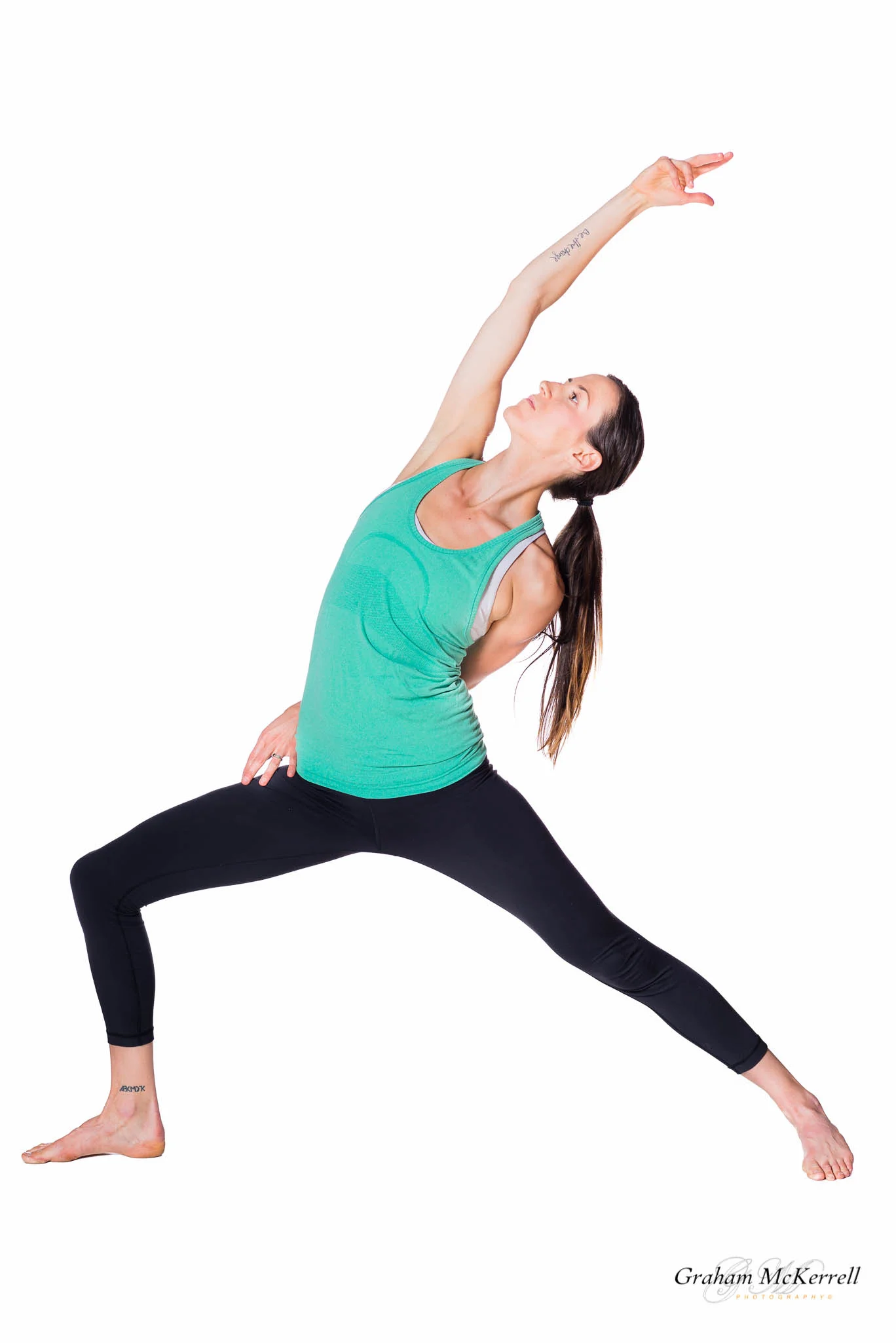When I mention that I teach and practice yoga, I often hear the response, "I should do yoga but I'm not flexible at all," or "I can't do yoga, it's too boring."
I find both responses fascinating and completely understandable. I felt the same way for years before I found my practice. I was the typical gym junkie that felt that if I didn't sweat a bucket-full or push myself to an obvious external limit, then it wasn't a workout. I saw the advanced poses in yoga classes and knew I was nowhere near capable of such a feat. What was the point of going to a class and keeping myself small compared to others in the room? I was convinced by a friend to try a yoga class in my second year of University, without knowing there are dozens of styles of yoga and countless numbers of ways a class can be taught depending on the teacher. I was convinced yoga was boring without any real understanding or experience of it. The class I happened to go to was a yin class, which is a slow and mindful class that has you in poses for upwards of five minutes. This solidified my belief that yoga was slow and boring and I spent the entire class counting down the time and laughing inwardly at the absurdity of people paying money for this guided slow stretch-session. I realize now that the teacher of that class was not experienced in introducing new-comers to class, and I went in with a belief and skepticism that I proved right within the first few minutes of class.
The next time I mustered up the courage and motivation to go to yoga was when I lived in Edmonton a couple years later. My brother had been going to Bikram, another style of yoga on the opposite spectrum from yin. Knowing my love for hard work and a solid sweat, my brother encouraged me to go with a pretty good idea that I would love it. I almost passed out the first class, and I was hooked.
Bikram is done in a hot room for 90 minutes. There are 26 postures that are done twice, at a consistent and somewhat quick-pace. The instructors follow a script that most do not deviate from much at all. It is predictable, consistent, and from my experience, a great introduction to the world of yoga for athletes. I practiced Bikram for one year before I ventured to try any other style of yoga. Through Bikram I found many physical benefits in my joints, especially my knees which I had struggled with for years. I developed an understanding and appreciation for meditative breath and the connection to movement. I learned to love savasana (that final pose at the end of class when you finally get to lay down without moving). I was inspired by the words of several of the teachers I experienced and began to witness the vast differences and varying connections I felt with the teachers based on their energy and their words.
Convinced hot yoga was my jam, I began to attend Moksha; another brand of yoga that is held in a hot room. Moksha studios offer (in general) several styles of yoga within the hot room experience. I used this platform to venture a bit from my routine and try Playful Flow classes, Hatha classes, Power Flow, and Yin. I found the teachers I jived with the best and would take whatever class they offered, so I could see the depth and variety that was yoga.
I then ventured further to try regular temperature yoga studios. Again, I quickly discovered that it was the teacher that made the class into an experience. I made friends with a few yoga teachers and was diligent in getting to their classes. I realized this was a great way to deepen my practice as they knew my goals, they knew my body, and could assist and prompt me in ways that I could understand. The common thread that developed through all of these classes, teachers, styles, and temperatures, was the language used to calm the mind. I found that yoga is so much more than the physical practice. It is a lifestyle, a philosophy, a culture, and ultimately, a tool for personal development.
As a recovering "worrier," perfectionist, and pessimist, yoga was the catalyst and tap-root into rediscovering my spirituality. I found a platform for growth and depth that brings gifts into my life daily. I got to a point in my practice that I was ready to learn more. I knew that the best way to continue my learning and have the motivation to continue my practice, was to become a teacher.
I began yoga Teacher Training at The Inspired Yoga Institute in January 2015, led by the amazing Nora Maskey and Alice Hong. This year long program was one of the best decisions I ever made. It was fun, mind-awakening, eye-opening, and soul-fueling.
I had already done a lot of work in getting my mind and body into a healthy and happy place, after 20 years of self-inflicted abuse and self-loathing. But it was my yoga teacher training that grounded me, satisfied me, and brought a deeper sense of strength and self-love that I continue to nourish to this day.
One of the books we went through during our training was The Yoga Sutras of Patanjali. This book has 196 excerpts that stand as the foundation of yoga philosophy.
The second sutra is what I have found to be one of the most well-rounded ideas that encapsulates the beauty and simplicity of the yoga practice.
Yoga Sutra 1.2 is...
Yogas-citta-vrtti-nirodhah
Yoga = union of all things; balance of extremes, effort and surrender, the one and the all; a harmonious state of mind; a bridge between the varying aspects of life; the connection between individual consciousness with supreme consciousness.
Citta (Chitta) = the mind stuff; the repository of thoughts and feelings; our cognitive abilities; to think about thinking; the seat of the witness or higher Self.
Vṛtti (Vritti) = our thoughts create our reality; the fluctuations within the mind; modifications from one thought to the next; constant movement.
Nirodhah (Ni + rodha) =
- Ni: completely; in every respect; from every direction.
- Rodha: confining; restraining; disciplining; not allowing to roam aimlessly.
This can be translated as...
Yoga is the stilling of the modifications of the mind, or,
Yoga is the calming and learning to direct the fluctuations and distractions in the mind, or,
Yoga is the restriction of the fluctuations of consciousness.
The physical practice of yoga - called asana - is only a small part of yoga philosophy. We heat up and move our body as a way to find balance and health and notice how we show up in tough moments in order to bring in language that embodies acceptance and patience, as well as a desire for growth and expansion. It is a practice of letting go of comparisons and building strength and resilience for life off our mat.
The goal of yoga is not to control, restrain, or confine the mind but to find calm and stillness in an otherwise distracted and fluctuating mind-state. When we gain mastery of our mind, we find detachment from the stories and emotional pendulum swing we allow ourselves to be victim to. Noise is to the mind as stress is to the body.
So the next time you go to a yoga class or roll your mat out at home, check yourself. Let go of your habit to compete with those around you. Notice how you talk to yourself when the sequence becomes spicy and challenging or slow and meditative. Choose to respond with words of compassion, patience, and contentment while you create the foundation for growth by noticing where your mind or body gets stuck. When the teacher says to connect your movement with your breath, truly engage in this. Notice how light you feel as you let go of the constant chatter in your mind and allow yourself to be swept up into the moment. And don't forget to take your gentle gaze and focused mind with you once roll up your mat to leave. It's never about perfection, it is about the process, the progress, and the journey from your 's'elf to your 'S'elf.
Namaste (I see you, I respect you, the light in me bows down to the light in you) xo

